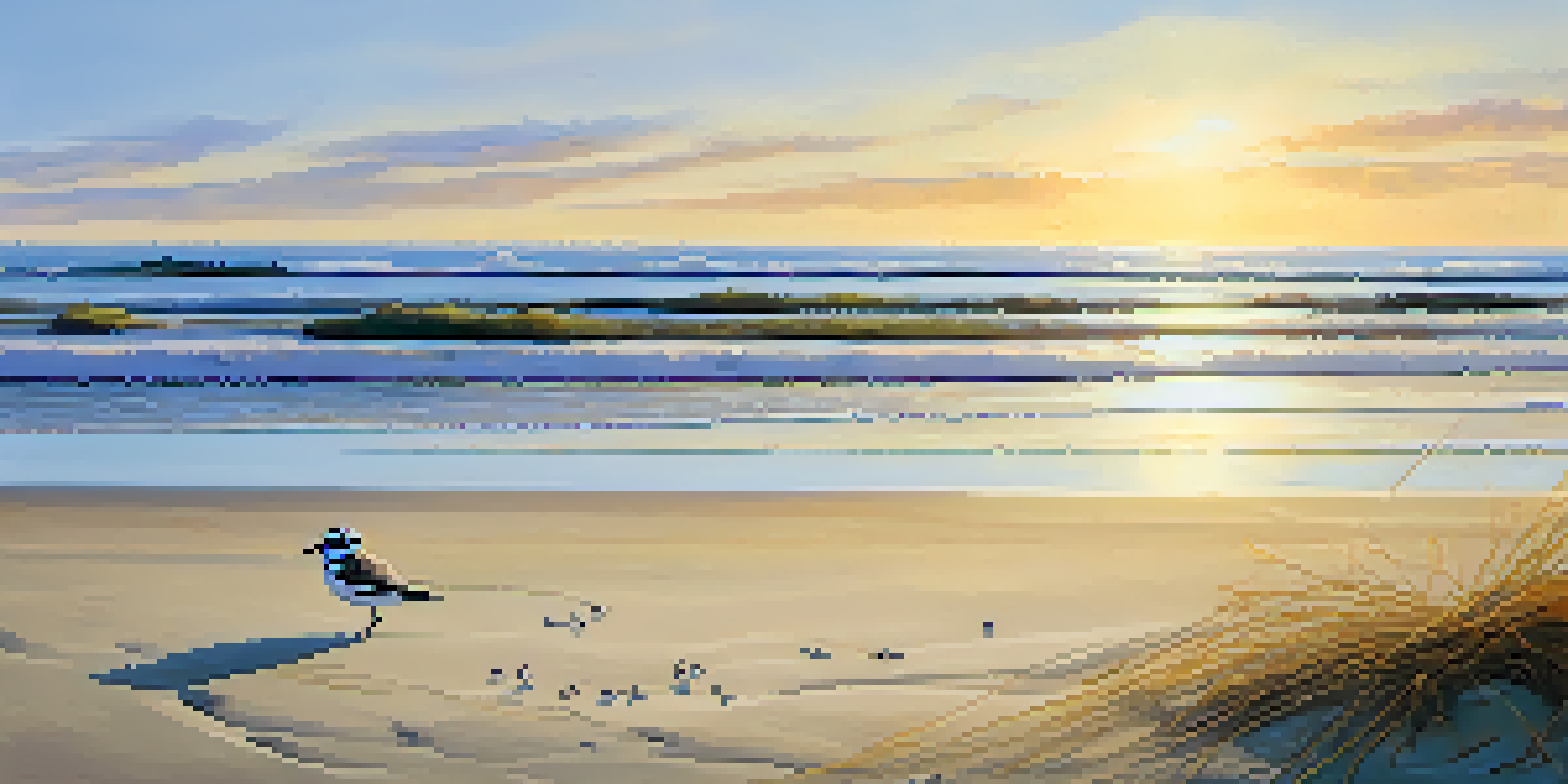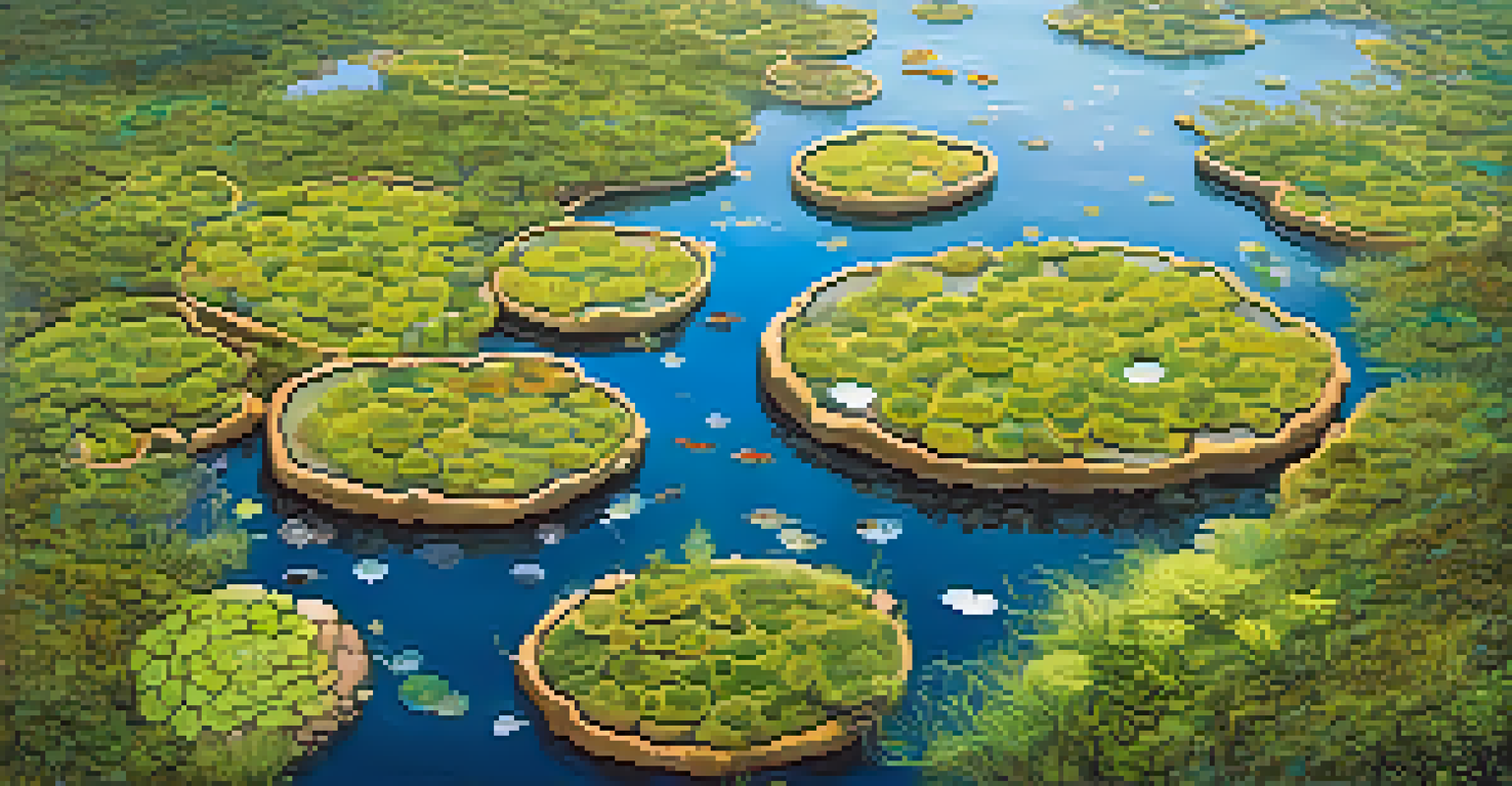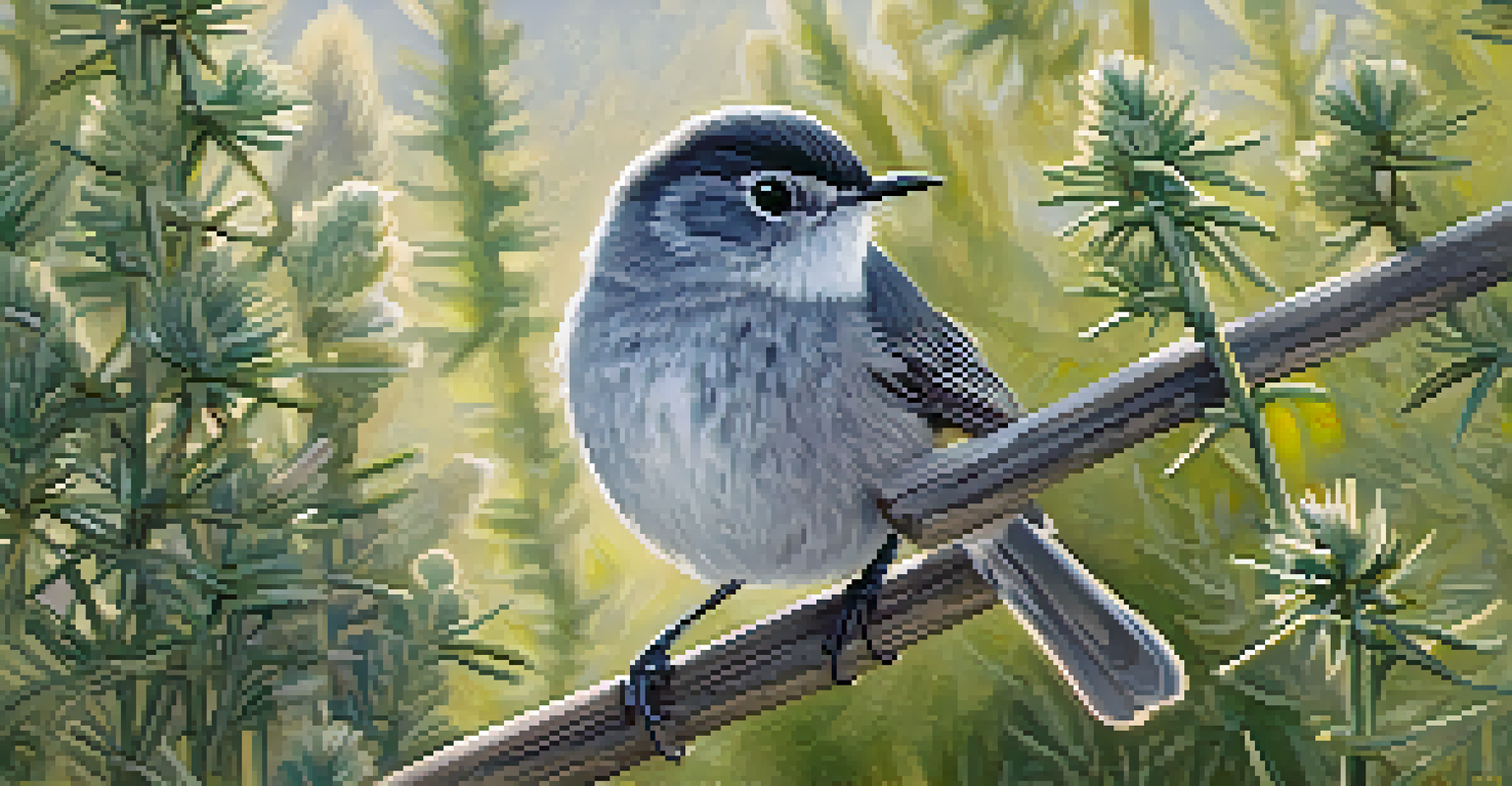San Diego's Unique Wildlife: A Focus on Local Endangered Species

Introduction to San Diego's Diverse Ecosystems
San Diego is renowned for its stunning landscapes and diverse ecosystems, which range from coastal areas to mountains. This variety creates unique habitats that support an array of wildlife, some of which are sadly endangered. Understanding these ecosystems helps us appreciate the intricate balance of life and the challenges faced by local species.
The earth has music for those who listen.
The region's climate and geography play a significant role in shaping these habitats. From the sun-soaked beaches to the rocky cliffs and lush canyons, each area provides a unique environment for different species. However, urban development and climate change are putting these delicate ecosystems at risk.
By focusing on San Diego's endangered species, we can highlight the importance of conservation efforts. It’s our responsibility to protect these unique creatures that contribute to the region's rich biodiversity.
The California Gnatcatcher: A Tiny Bird in Trouble
One of San Diego's most notable endangered species is the California gnatcatcher, a small songbird known for its distinctive gray plumage. This bird relies on coastal sage scrub habitats, which have been severely diminished by urban development and agriculture. As a result, its population has declined significantly in recent years.

Efforts to protect the California gnatcatcher include habitat restoration and conservation programs. These initiatives aim to preserve the remaining sage scrub areas, ensuring that this tiny bird can continue to thrive. Community involvement has also played a crucial role in raising awareness about its plight.
San Diego's Rich Biodiversity
San Diego is home to diverse ecosystems that support endangered species, highlighting the need for conservation.
By supporting local conservation groups and participating in habitat restoration projects, residents can contribute to the survival of the California gnatcatcher. Every little bit helps in preserving this unique species and its habitat.
The Western Snowy Plover: A Coastal Resident
The Western snowy plover is another endangered species that calls San Diego home, particularly along the sandy beaches. This small shorebird relies on open, sandy areas to nest, but its breeding habitats are threatened by beachgoers and habitat destruction. Conservationists are working hard to create designated nesting areas to protect these vulnerable birds.
In every walk with nature one receives far more than he seeks.
During the nesting season, volunteers monitor these areas to ensure that the plovers are not disturbed. By establishing roped-off zones, they help to educate the public about the importance of sharing the beach with wildlife. This collaborative approach fosters a sense of stewardship among beachgoers.
The success of these conservation efforts hinges on community awareness and cooperation. By respecting nesting areas and following guidelines, everyone can play a part in safeguarding the Western snowy plover's future.
The San Diego Fairy Shrimp: A Unique Aquatic Species
The San Diego fairy shrimp is a fascinating, tiny crustacean that thrives in temporary pools, particularly in vernal pools found throughout the region. Unfortunately, this unique species is listed as endangered due to habitat loss caused by urbanization and pollution. The fairy shrimp's lifecycle is intricately tied to these ephemeral pools, making its survival particularly precarious.
Efforts to protect the San Diego fairy shrimp focus on preserving its seasonal habitats and promoting awareness of its ecological significance. Conservationists work to restore vernal pools and educate the public on the importance of these unique ecosystems. Every pool is a vital resource for the shrimp and other species that depend on them.
Community's Role in Conservation
Local residents and organizations can significantly impact the survival of endangered species through involvement in conservation efforts.
By supporting conservation initiatives and advocating for responsible land use, we can help ensure that the San Diego fairy shrimp continues to thrive. Protecting these pools means safeguarding a piece of San Diego's unique biodiversity.
The Least Bell's Vireo: A Songbird on the Edge
The Least Bell's vireo, a small songbird, is another endangered species found in San Diego. This bird prefers dense riparian habitats, which have been drastically reduced due to development and agriculture. As a result, its numbers have plummeted, making targeted conservation efforts essential.
To help this bird thrive, conservationists are working to restore and protect its natural habitat. This includes planting native vegetation along rivers and streams, creating a more favorable environment for nesting. These efforts not only benefit the Least Bell's vireo but also support a variety of other wildlife in the area.
Community engagement is vital for the success of these conservation projects. By participating in local restoration events, residents can make a direct impact on the survival of the Least Bell's vireo and the health of San Diego's ecosystems.
The Importance of Habitat Preservation
Habitat preservation is crucial for the survival of San Diego's endangered species. Many of these animals depend on specific environments that are increasingly threatened by human activities. By prioritizing the protection of these habitats, we can create safer spaces for vulnerable species to flourish.
Conservationists advocate for the establishment of protected areas and wildlife corridors that allow endangered species to move freely between habitats. These strategies help maintain genetic diversity and promote healthy populations. It’s a collaborative effort that requires the support of local communities and policymakers.
Importance of Habitat Preservation
Protecting habitats is crucial for the survival of San Diego's endangered species and the overall health of local ecosystems.
When we invest in habitat preservation, we are not only protecting wildlife but also enriching our own lives. Healthy ecosystems provide essential services, such as clean air and water, that benefit everyone in the region.
Community Involvement in Conservation Efforts
Community involvement plays a pivotal role in the conservation of endangered species in San Diego. Local residents, volunteers, and organizations can make a significant impact by participating in restoration projects, educational programs, and advocacy efforts. Engaging with these initiatives fosters a sense of connection to the local environment.
Many organizations host events and workshops to educate the public about the importance of biodiversity and conservation. These initiatives not only raise awareness but also empower individuals to take action in their own neighborhoods. Simple acts, like planting native species in gardens or participating in clean-up events, can contribute to larger conservation goals.

By working together, communities can create a powerful movement for change. Every person’s contribution matters, and collective efforts can lead to significant improvements in the protection of San Diego's unique wildlife.
Conclusion: A Call to Action for Local Wildlife
As we explore the unique wildlife of San Diego, it becomes clear that many species are facing significant challenges. From the California gnatcatcher to the San Diego fairy shrimp, these endangered creatures play vital roles in maintaining our ecosystem's balance. It’s our responsibility to take action and support conservation efforts.
By educating ourselves and others about the threats faced by local wildlife, we can foster a culture of respect and stewardship. Small actions can lead to big changes, whether it’s advocating for habitat protection or participating in community events.
Together, we can work towards a future where San Diego's unique wildlife thrives. Let’s embrace the beauty of our local ecosystems and commit to protecting them for generations to come.